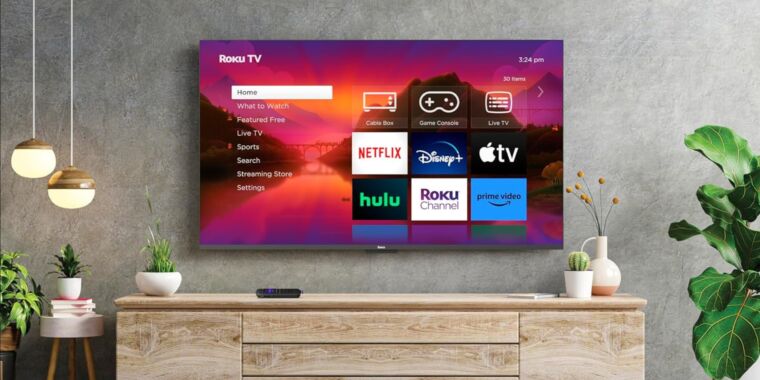- cross-posted to:
- technology@lemmy.world
- cross-posted to:
- technology@lemmy.world
A patent application from the company spotted by Lowpass describes a system for displaying ads over any device connected over HDMI, a list that could include cable boxes, game consoles, DVD or Blu-ray players, PCs, or even other video streaming devices. Roku filed for the patent in August 2023 and it was published in November 2023, though it hasn’t yet been granted.
The technology described would detect whether content was paused in multiple ways—if the video being displayed is static, if there’s no audio being played, if a pause symbol is shown anywhere on screen, or if (on a TV with HDMI-CEC enabled) a pause signal has been received from some passthrough remote control. The system would analyze the paused image and use metadata “to identify one or more objects” in the video frame, transmit that identification information to a network, and receive and display a “relevant ad” over top of whatever the paused content is.



This is the best summary I could come up with:
Now, the company is apparently experimenting with ways to show ads over top of even more of the things you plug into your TV.
A patent application from the company spotted by Lowpass describes a system for displaying ads over any device connected over HDMI, a list that could include cable boxes, game consoles, DVD or Blu-ray players, PCs, or even other video streaming devices.
This theoretical Roku TV’s internal hardware would be capable of taking the original source video feed, rendering an ad, and then combining the two into a single displayed image.
Among the business risks disclosed on Roku’s financial filings from its 2023 fiscal year (PDF), the company says that its “future growth depends on the acceptance and growth of streaming TV advertising and advertising platforms.”
If implemented as described, this system both gives Roku another place to put ads, and gives the company another source of user data that can be used to encourage advertisers to spend on its platforms.
It seems as though a Roku TV that was capable of this kind of ad insertion would need more sophisticated internal hardware than most current sets currently come with—this is the same company that feuded with Google a few years back because it didn’t want to pay for more-expensive chips that could decode Google’s AV1 video codec.
The original article contains 591 words, the summary contains 221 words. Saved 63%. I’m a bot and I’m open source!